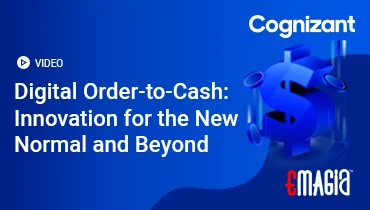Introduction
In the rapidly evolving digital landscape, B2B payment fraud has emerged as a significant threat to businesses worldwide. With the increasing sophistication of cybercriminals and the complexity of financial transactions, organizations must adopt robust strategies to safeguard their financial assets. This comprehensive guide delves into the various facets of B2B payment fraud, exploring its types, causes, and effective prevention measures.
Understanding B2B Payment Fraud
What is B2B Payment Fraud?
B2B payment fraud refers to deceptive practices aimed at unlawfully obtaining funds from businesses during financial transactions. Unlike consumer fraud, B2B fraud often involves larger sums and more complex schemes, making it a lucrative target for fraudsters.
Common Types of B2B Payment Fraud
- Business Email Compromise (BEC): Fraudsters impersonate company executives or vendors to trick employees into transferring funds to fraudulent accounts.
- Invoice Fraud: Scammers send fake invoices that appear legitimate, leading businesses to make payments for goods or services they never received.
- Account Takeover: Cybercriminals gain unauthorized access to a company’s financial accounts, enabling them to initiate fraudulent transactions.
- Check Fraud: Altered or counterfeit checks are used to deceive businesses into releasing funds.
- Phishing Attacks: Deceptive emails or messages are used to trick employees into revealing sensitive financial information.
Impact of B2B Payment Fraud
The repercussions of B2B payment fraud are far-reaching:
- Financial Losses: Businesses can suffer significant monetary losses, sometimes amounting to millions.
- Reputational Damage: Falling victim to fraud can tarnish a company’s reputation, leading to loss of client trust.
- Operational Disruption: Investigating and rectifying fraud can divert resources and disrupt normal business operations.
- Legal Consequences: Companies may face legal challenges, especially if customer data is compromised.
Causes and Vulnerabilities
Factors Contributing to B2B Payment Fraud
- Lack of Employee Awareness: Employees unaware of fraud tactics are more susceptible to deception.
- Inadequate Internal Controls: Weak approval processes and lack of segregation of duties can facilitate fraud.
- Outdated Technology: Legacy systems may lack the necessary security features to prevent modern fraud techniques.
- Third-Party Risks: Vendors or partners with poor security practices can introduce vulnerabilities.
- Rapid Digital Transformation: Accelerated adoption of digital payment methods without corresponding security measures increases risk.
Strategies for B2B Payment Fraud Prevention
Implementing Strong Authentication Measures
- Multi-Factor Authentication (MFA): Requiring multiple forms of verification reduces the risk of unauthorized access.
- Biometric Verification: Using fingerprints or facial recognition adds an extra layer of security.
Enhancing Employee Training and Awareness
- Regular Training Sessions: Educate employees about common fraud schemes and how to recognize them.
- Simulated Phishing Exercises: Test employee responses to phishing attempts to identify areas needing improvement.
Utilizing Secure Payment Platforms
- ERP-Integrated Systems: Platforms like Pothera ERP offer encrypted transactions and real-time monitoring.
- Virtual Cards: Single-use virtual cards minimize exposure of sensitive financial information.
Monitoring Transactions in Real-Time
- AI-Powered Analytics: Machine learning algorithms can detect anomalies and flag suspicious transactions.
- Behavioral Biometrics: Analyzing user behavior helps identify unauthorized activities.
Establishing Robust Internal Controls
- Dual Control Mechanisms: Require two individuals to authorize significant transactions.
- Regular Audits: Conduct periodic reviews to detect and address irregularities.
Securing Communication Channels
- Email Encryption: Protect sensitive information from interception.
- Verification Protocols: Confirm payment requests through multiple channels before processing.
How Emagia Enhances B2B Payment Fraud Prevention
Emagia offers advanced solutions tailored to combat B2B payment fraud:
- AI-Driven Analytics: Emagia’s platform leverages artificial intelligence to detect and prevent fraudulent activities in real-time.
- Automated Workflows: Streamlining payment processes reduces manual errors and potential fraud entry points.
- Comprehensive Reporting: Detailed analytics provide insights into transaction patterns, aiding in early fraud detection.
- Integration Capabilities: Emagia seamlessly integrates with existing ERP systems, enhancing overall security infrastructure.
Conclusion
B2B payment fraud poses a significant threat to businesses, but with proactive measures, companies can safeguard their financial assets. Implementing robust authentication protocols, educating employees, leveraging advanced technologies, and partnering with solutions like Emagia can fortify defenses against fraudulent activities. Staying vigilant and continuously updating security practices are essential in the ever-evolving landscape of cyber threats.
Frequently Asked Questions
What is the most common type of B2B payment fraud?
Business Email Compromise (BEC) is one of the most prevalent forms, where attackers impersonate company executives or vendors to deceive employees into transferring funds.
How can virtual cards help prevent B2B payment fraud?
Virtual cards are single-use payment methods that reduce the risk of fraud by limiting exposure of sensitive financial information.
Why is employee training crucial in fraud prevention?
Employees are often the first line of defense. Regular training ensures they can recognize and respond appropriately to fraudulent attempts.
How does AI enhance fraud detection?
AI analyzes transaction patterns in real-time, identifying anomalies that may indicate fraudulent activities, allowing for swift action.
What steps can small businesses take to prevent payment fraud?
Small businesses should implement multi-factor authentication, conduct regular audits, educate employees, and use secure payment platforms to mitigate fraud risks.



